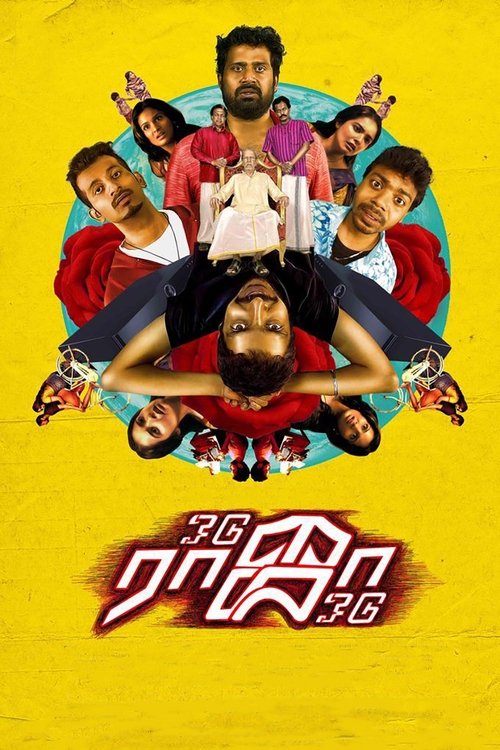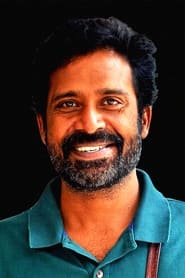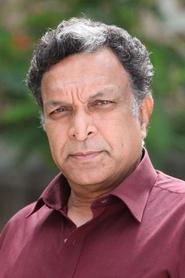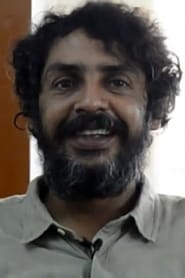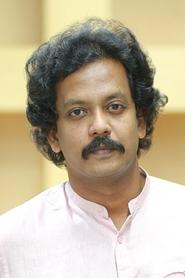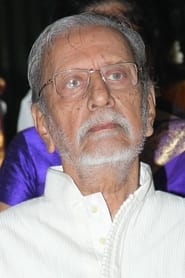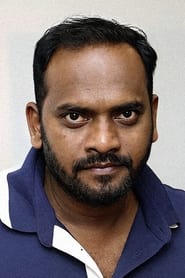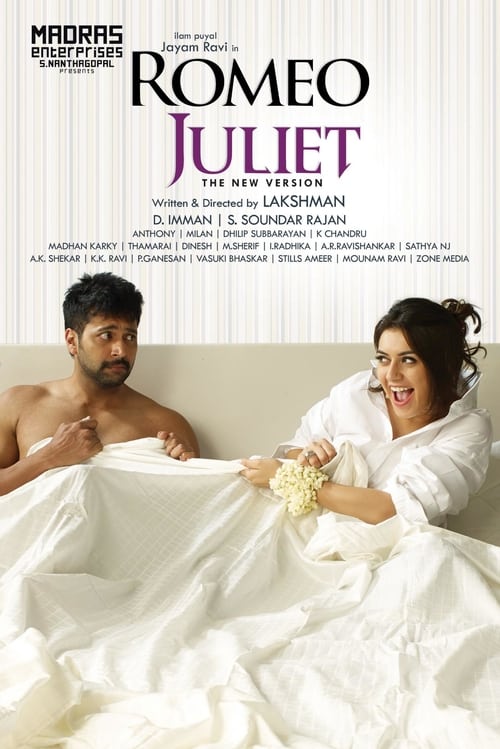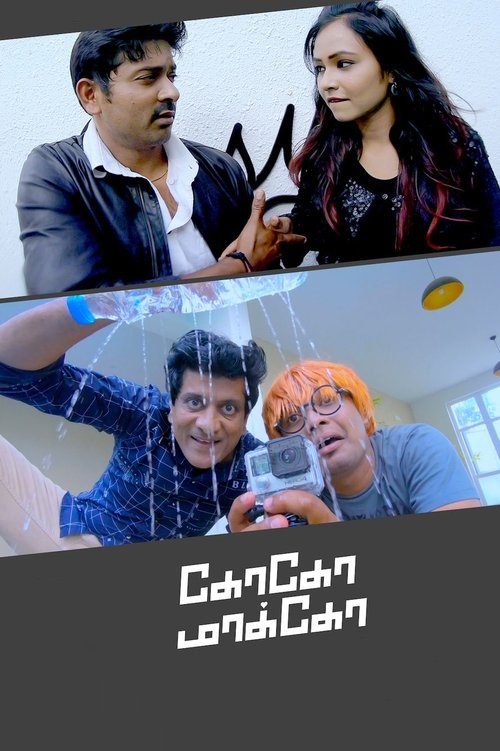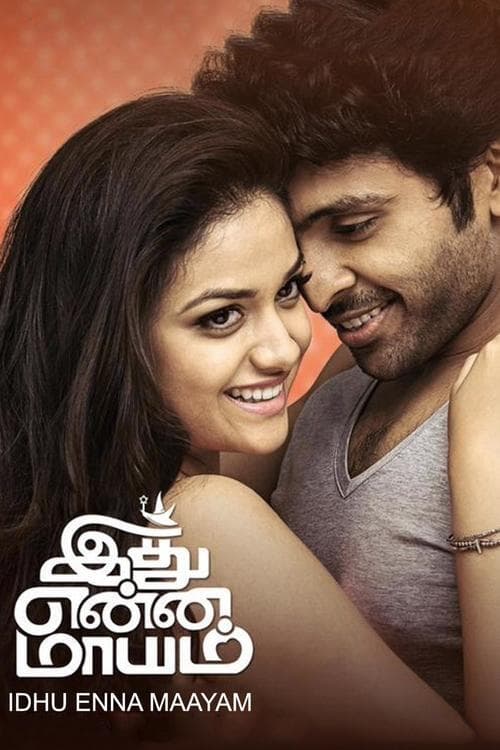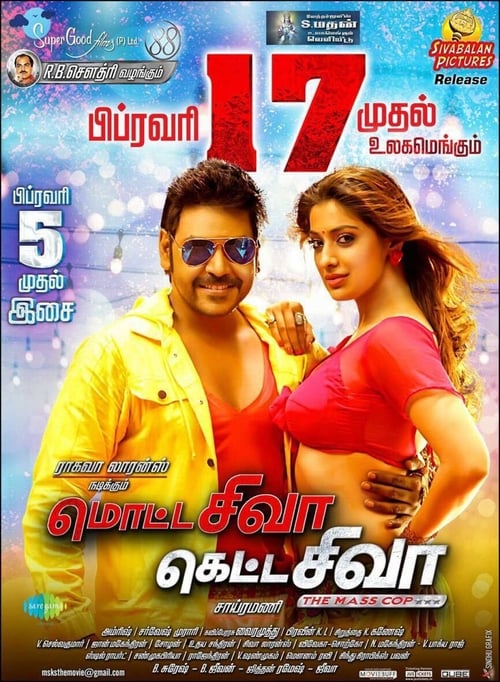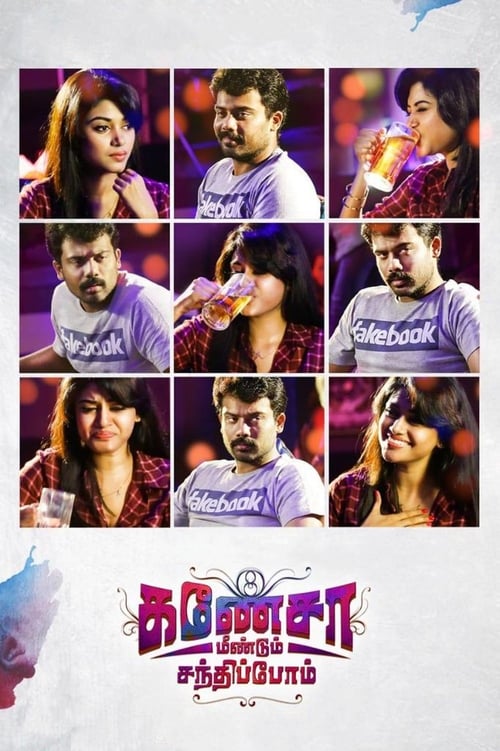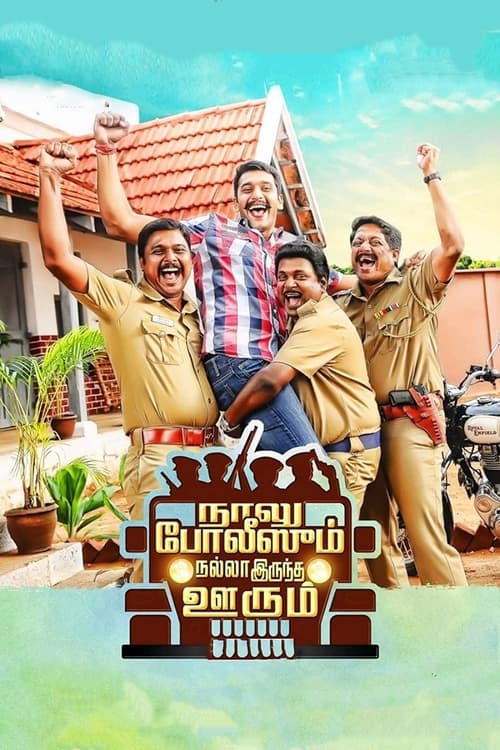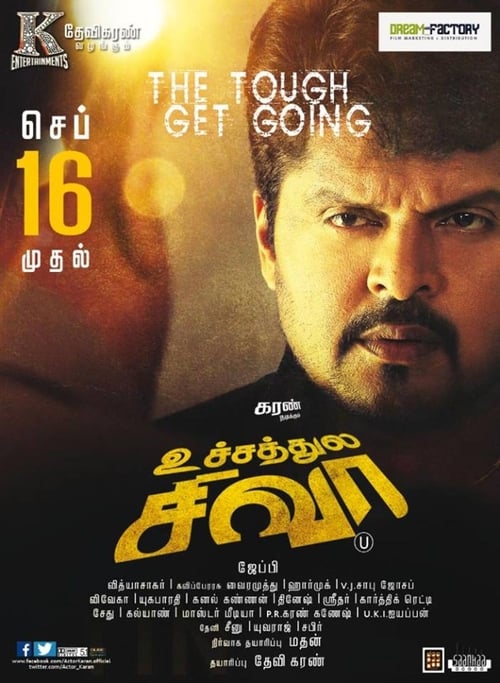
Ask Your Own Question
What is the plot?
The film Odu Raja Odu opens in the modest home of Manohar, a struggling Tamil novelist gripped by writer's block. The day is ordinary, yet heavy with tension. Manohar, played by Guru Somasundaram, sits listlessly at his desk, papers scattered, his frustration palpable. His wife, Meera (Lakshmi Priyaa), a practical homemaker, enters the room with a firm resolve. She hands Manohar money and insists, "Get me the set-top box for our wedding anniversary. No excuses." Her tone is a mix of expectation and impatience, underscoring the domestic pressure Manohar faces. This simple task--a mundane errand--sets the entire chaotic narrative into motion.
Manohar's lethargy contrasts sharply with Meera's practicality. He mutters under his breath about his writer's block, but the money in his hand is a symbol of trust and responsibility he cannot shirk. As he steps out, he meets Peter (Harinath), his friend who is deeply entangled in the city's underworld as a drug peddler. Peter's street-smart demeanor and shady dealings introduce a world far removed from Manohar's quiet domestic life. Despite his reservations, Manohar enlists Peter's help to buy the set-top box, unwittingly dragging himself into a dangerous and absurd underbelly.
Their first destination is the local electronics store, a nondescript place that quickly becomes the epicenter of their troubles. Upon arrival, they find the store shuttered, or the set-top box unavailable, forcing them to navigate the city's chaotic streets in search of alternatives. The urban landscape is depicted as a labyrinth of narrow alleys and bustling markets, teeming with unpredictable characters. The camera lingers on the grime and noise, emphasizing the contrast between Manohar's mundane mission and the dangerous world Peter inhabits.
As they wander, Peter's drug dealings catch up with them. They encounter rival drug dealers and local criminals, escalating tensions with each interaction. The narrative tension rises when a misunderstanding leads to a confrontation with a local drug lord. Peter's reputation as a peddler draws suspicion and hostility, and Manohar, naive and out of his depth, is caught in the crossfire. The dialogue crackles with dark humor and menace as Peter warns Manohar, "This isn't your world, Manu. Stay close and keep quiet."
Throughout their journey, Manohar discovers the extent of Peter's criminal involvement. Scenes reveal Peter's stash and his dealings in shadowy hideouts, places filled with nervous energy and the constant threat of violence. Manohar's initial reluctance turns to fear and frustration, yet he is compelled to continue, driven by his promise to Meera. The camera captures Manohar's growing unease, his eyes darting nervously as they navigate increasingly dangerous territory.
The tension peaks with a chaotic confrontation involving the police. Manohar and Peter are mistakenly implicated in a drug bust. The police station scenes are claustrophobic and intense, with interrogations that reveal the fragility of Manohar's situation. Manohar tries to explain, "I'm just a writer. I'm not part of this." But the officers are skeptical, and Peter's criminal ties only deepen their suspicion. The dialogue here is sharp, underscoring the absurdity of Manohar's predicament.
Despite the escalating chaos, no character dies in the film. The narrative focuses on the near-misses and the mounting pressure rather than fatal outcomes. This absence of death maintains the film's black comedy tone, where the danger is real but the consequences are often farcical.
As the day unfolds, Manohar confronts his own passivity and irresponsibility. Arguments with Meera over the phone reveal the strain on their marriage. Meera's voice over the call is both sharp and weary: "You promised. Don't make me regret trusting you." These moments deepen the emotional stakes, showing Manohar's internal conflict between his dreams and his duties.
The climax arrives as Manohar and Peter, cornered by both criminals and police, face a tense standoff in a dimly lit alley. The scene is charged with suspense, the flickering streetlights casting long shadows. Peter's quick thinking and Manohar's newfound resolve help them escape the immediate danger. In a moment of raw honesty, Manohar tells Peter, "I need to change. Not just for Meera, but for myself."
The film closes with Manohar returning home, the set-top box in hand, though the exact details of the purchase remain ambiguous. The camera lingers on Meera's relieved smile as Manohar steps through the door, a man transformed by the day's ordeals. The final scene blends comedy and pathos, highlighting the absurdity and unpredictability of life's struggles. Manohar sits back at his desk, now inspired, pen poised over paper, ready to write again.
Odu Raja Odu ends without neat resolutions but with a renewed sense of purpose and the fragile hope of redemption, capturing the chaotic pulse of urban life and the unexpected consequences of seemingly simple choices.
What is the ending?
In the ending of "Odu Raja Odu," the main characters face the consequences of their actions as the story reaches its climax. The protagonist, who has been embroiled in a series of chaotic events, ultimately confronts the antagonist. The resolution leads to a significant change in their lives, with some characters finding redemption while others face dire consequences.
As the film progresses towards its conclusion, the tension escalates. The protagonist, having navigated through a web of deceit and conflict, finally comes face to face with the antagonist in a dramatic showdown. This confrontation is not just physical but also emotional, as it encapsulates the struggles and motivations that have driven the characters throughout the film. The protagonist's journey has been one of self-discovery, and this moment serves as a culmination of their growth.
In the final scenes, the protagonist emerges victorious but at a cost. The antagonist is defeated, but the victory is bittersweet, as it comes with the realization of the impact of their choices. The film closes with a sense of resolution, as the protagonist reflects on their journey and the lessons learned, while other characters either find closure or are left to deal with the aftermath of the chaos.
Now, let's delve into the ending in a more detailed, chronological narrative.
As the climax approaches, the protagonist, who has been on a tumultuous journey filled with betrayal and conflict, prepares for the final confrontation. The atmosphere is thick with tension, and the stakes are higher than ever. The protagonist, fueled by a mix of determination and desperation, gathers their allies, who have been pivotal throughout the story. Each character is emotionally charged, reflecting on their past decisions and the weight of the impending confrontation.
The scene shifts to a dimly lit warehouse, where the antagonist awaits. The setting is foreboding, with shadows dancing across the walls, symbolizing the darkness that has enveloped the characters' lives. The protagonist enters, heart racing, fully aware that this moment could change everything. The antagonist, exuding confidence, taunts the protagonist, reminding them of the chaos they have caused. This exchange is charged with emotion, revealing the deep-seated animosity and the personal stakes involved.
As the confrontation escalates, physical altercations ensue. The protagonist fights not just for survival but for redemption, channeling all the pain and struggles faced throughout the film. Each punch thrown and each dodge made is a reflection of their internal battle. The fight is intense, showcasing the protagonist's growth and resilience. The audience can feel the weight of every blow, as it symbolizes the culmination of their journey.
In a pivotal moment, the protagonist gains the upper hand, but instead of delivering a final blow, they hesitate. This moment of vulnerability highlights their transformation; they are no longer the person driven solely by revenge. Instead, they seek to break the cycle of violence. The antagonist, realizing their impending defeat, attempts to manipulate the situation, but the protagonist stands firm, choosing to walk away rather than succumb to the darkness.
The aftermath of the confrontation is poignant. The antagonist is left defeated, grappling with the consequences of their actions. The protagonist, though victorious, is not unscathed. They emerge from the warehouse, battered but enlightened, understanding that true strength lies in forgiveness and moving forward. The allies who stood by the protagonist also find their paths altered, some choosing to leave behind the chaos, while others remain to support the protagonist in their new journey.
As the film concludes, the protagonist reflects on the lessons learned. The final scenes depict a sense of hope and renewal, contrasting the darkness that preceded it. The characters, now changed by their experiences, look towards a future that, while uncertain, holds the promise of redemption and growth. The film closes on a note of introspection, leaving the audience to ponder the complexities of human nature and the choices that define us.
Is there a post-credit scene?
In the movie "Odu Raja Odu," there is indeed a post-credit scene that adds a humorous twist to the film's conclusion. After the main credits roll, the scene opens with the protagonist, who has been through a series of chaotic and comedic events throughout the film, sitting in a café. He appears to be deep in thought, reflecting on the absurdity of his recent experiences.
As he sips his coffee, a character from earlier in the film unexpectedly enters the café. This character, known for their quirky personality, approaches the protagonist with a wild idea for a new scheme, suggesting they team up for another adventure. The protagonist, initially hesitant, is drawn in by the excitement and the promise of more chaos.
The scene is filled with light-hearted banter, showcasing their contrasting personalities--one being more cautious and the other impulsive. The protagonist's reluctance slowly shifts to intrigue, and the scene ends with them laughing and planning their next escapade, leaving the audience with a sense of anticipation and amusement.
This post-credit moment encapsulates the film's comedic tone and reinforces the theme of friendship and adventure, suggesting that the journey for these characters is far from over.
What motivates the main character, Karthik, throughout the film?
Karthik, portrayed as a determined and ambitious individual, is primarily motivated by his desire to prove himself and achieve success in his career. His journey is marked by personal struggles and the need to overcome obstacles that challenge his integrity and relationships.
How does the relationship between Karthik and his love interest evolve in the film?
Karthik's relationship with his love interest, Meera, evolves from initial attraction to a deeper emotional connection. As they face various challenges together, including societal pressures and personal dilemmas, their bond strengthens, showcasing their commitment to each other despite the odds.
What role does the antagonist play in Karthik's journey?
The antagonist, a powerful figure in the community, serves as a significant obstacle in Karthik's path. This character embodies corruption and manipulation, creating conflicts that test Karthik's resolve and moral compass, ultimately pushing him to confront his fears and stand up for his beliefs.
What are the key turning points in Karthik's character development?
Key turning points in Karthik's character development include moments of failure that lead to self-reflection, encounters with mentors who guide him, and critical decisions that challenge his values. Each turning point forces him to reassess his priorities and the impact of his choices on those around him.
How does the film depict the theme of friendship through Karthik's interactions?
The film portrays friendship as a vital support system for Karthik. His interactions with friends highlight loyalty, camaraderie, and the importance of having a reliable network during tough times. These friendships are tested through various trials, ultimately reinforcing the idea that true friends stand by each other in adversity.
Is this family friendly?
"Odu Raja Odu," produced in 2018, is a film that blends elements of comedy and drama, but it does contain some scenes that may not be suitable for younger audiences or sensitive viewers. Here are some potentially objectionable aspects:
-
Violence: There are instances of physical confrontations and aggressive behavior that may be unsettling for children.
-
Mature Themes: The film explores themes of betrayal, revenge, and moral dilemmas, which may be complex for younger viewers to understand.
-
Language: There may be instances of strong language or suggestive dialogue that could be inappropriate for children.
-
Emotional Turmoil: Characters experience significant emotional distress, including moments of despair and conflict, which could be upsetting for sensitive viewers.
-
Romantic Elements: There are romantic subplots that may include suggestive situations or discussions that might not be suitable for all audiences.
These elements contribute to a narrative that, while engaging, may require parental discretion for younger viewers.

